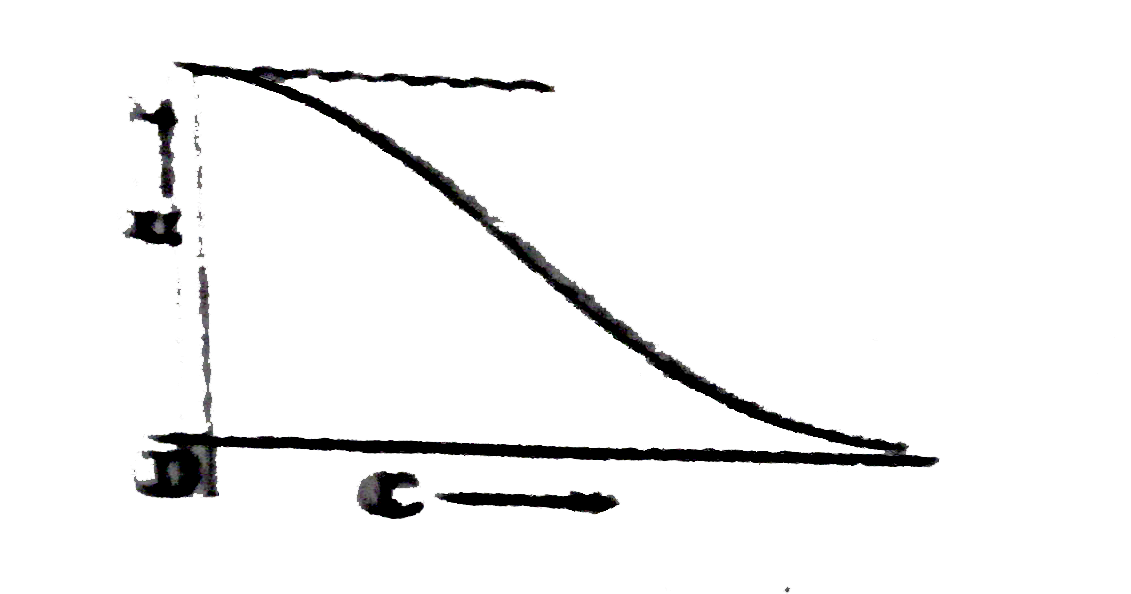A weak acid of dissociation constant 10−5 is being titrated with aqueous NaOH solution . The pH at the point of one third of neutralization of the acid will be
5+log−log3
5−log2
5−log3
5−log6
The correct Answer is:B
To find the pH at the point of one third of neutralization of a weak acid with a dissociation constant Ka=10−5, we can follow these steps:
1. Understanding One Third Neutralization:
- Let the initial concentration of the weak acid be C.
- At one third neutralization, 13C of the acid has been neutralized by NaOH, leaving 23C of the weak acid remaining.
- The amount of salt formed (the conjugate base) is 13C.
2. Concentration of Acid and Salt:
- Concentration of the weak acid (HA) remaining: (HA)=23C
- Concentration of the salt (A⁻) formed: (A−)=13C
3. Using the Henderson-Hasselbalch Equation:
- The pH of a buffer solution can be calculated using the Henderson-Hasselbalch equation:
pH=pKa+log((A−)(HA))
4. Calculating pKa:
- Given Ka=10−5:
pKa=−log(Ka)=−log(10−5)=5
5. Substituting Values into the Equation:
- Substitute (A−)=13C and (HA)=23C into the equation:
pH=5+log⎛⎝13C23C⎞⎠
- Simplifying the logarithm:
pH=5+log(12)
6. Calculating the Logarithm:
- We know that log(12)=−log(2):
pH=5−log(2)
7. Final Answer:
- The pH at the point of one third neutralization of the weak acid is:
pH=5−log(2)
- Let the initial concentration of the weak acid be C.
- At one third neutralization, 13C of the acid has been neutralized by NaOH, leaving 23C of the weak acid remaining.
- The amount of salt formed (the conjugate base) is 13C.
- Concentration of the weak acid (HA) remaining: (HA)=23C
- Concentration of the salt (A⁻) formed: (A−)=13C
- The pH of a buffer solution can be calculated using the Henderson-Hasselbalch equation:
pH=pKa+log((A−)(HA))
- Given Ka=10−5:
pKa=−log(Ka)=−log(10−5)=5
- Substitute (A−)=13C and (HA)=23C into the equation:
pH=5+log⎛⎝13C23C⎞⎠
- Simplifying the logarithm:
pH=5+log(12)
- We know that log(12)=−log(2):
pH=5−log(2)
- The pH at the point of one third neutralization of the weak acid is:
pH=5−log(2)
Topper's Solved these Questions
- BOOK - DINESH PUBLICATIONCHAPTER - IONIC EQUILIBRIUM EXERCISE - SELECTED STRAIGHT OBJECTIVE TYPE MCQs10videos
IONIC EQUILIBRIUM
- BOOK - DINESH PUBLICATIONCHAPTER - IONIC EQUILIBRIUM EXERCISE - MCQs with only one correct Answer29videos
IONIC EQUILIBRIUM
- BOOK - DINESH PUBLICATIONCHAPTER - IONIC EQUILIBRIUM EXERCISE - MULTIPLE CHOICE QUESTIONS60videos
IONIC EQUILIBRIUM
- BOOK - DINESH PUBLICATIONCHAPTER - HYDROCARBONSEXERCISE - All Questions493videos
HYDROCARBONS
- BOOK - DINESH PUBLICATIONCHAPTER - NO IDEAEXERCISE - Unit Test -1videos
NO IDEA
Similar Questions
Knowledge Check
- Question 1 - Select One
A weak acid of dissociation constant 10−5 is being titrated with aqueous NaOH solution . The pH at the point of one third of neutralization of the acid will be
A5+log2−log3B5 - log 2C5 - log 3D5 - log 6 - Question 2 - Select One
A weak acid of dissociation constant 10−5 is being titrated with aqueous NaOH solution . The pH at the point of one third of neutralization of the acid will be
A5 log 2 - log 3B5 - log 2C5 - log 3D5 - log 6 - Question 3 - Select One
A weak acid of dissociation constant 10−5 is being titrated with aqueous NaOH solution. The pH at the point of one-third neutralisation of the acid will be
A5+lgo2−log3B5−log2C5−log3D5−log6
For a weak acid HA with dissociation constant 10−9, POH of its 0.1 M solutions is
View SolutionFor a weak acid HA with dissociation constant 10−9, pOH of its 0.1M solution is
View Solution(a)When 100 ml of 0.1M NaCN solution is titrated with 0.1 M HCl solution the variation of pH of solution with volume of HCl added will be :

(b)Variation of degree of dissociation α with concentration for a weak electrolyte at a particular temperature is best represented by :

( c)0.1 M acetic acid solution is titrated against 0.1 M NaOH solution. The difference in pH between 1/4 and 3/4 stages of neutralization of acid will be 2 log 3.View SolutionA salt is formed when a weak acid of dissociation constant 10−4 and weak base of dissociation constant 10−5 are mixed. The pH and degree of hydrolysis of salt solution are
View SolutionA salt is formed when a weak acid of dissociation constant 10−4 and weak base of dissociation constant 10−5 are mixed. The pH and degree of hydrolysis of salt solution are
View Solution

